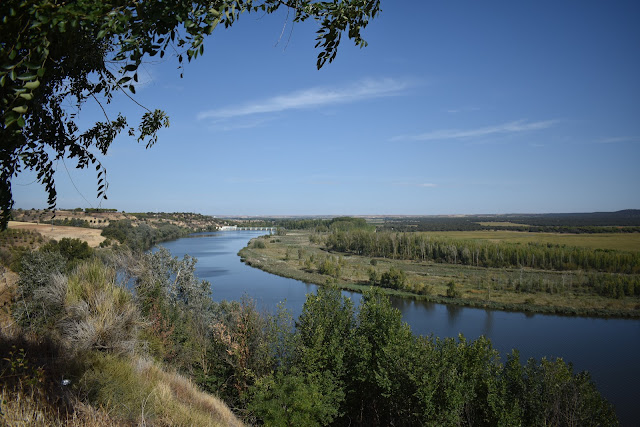Spain’s Rioja wine area was discussed in the last Blog. Today, we’ll focus on the neighboring Ribera Del Duero (RdD) district. The RdD, like the Rioja, produces high quality, complex wines that have great aging potential. While both of the wine regions are located at approximately the same latitude and only a few hours drive from one another, they are distinctly different. Below are five significant differences between the two rock-star districts.
The Duero River (Douro across the border in Portugal) exerts a huge influence on the RdD's terroir1. Terroir
Both the RdD & Rioja have major rivers that moderate their climates. The RdD, traversed for 70 miles by the Duero River, is a 3,000 foot high plateau with baking hot summers and freezing cold winters which are tamed by this river. Unlike the Rioja, there is no maritime influence from the Atlantic. Furthermore, in contrast to the Rioja, the RdD’s soil is clay, silt & limestone.
RdD wines are more masculine than the Rioja's softer style wines
The extreme climatic conditions coupled with the heartier soils of the RdD translate to wines that tend to be more muscular than those of the Rioja. RdD wines are typically from riper grapes of darker fruit with higher alcohol potential. Due to its terroir, the RdD also has more assertive flavors (think black cherry & blackberry), while the Rioja offers softer red fruit flavors such as strawberry.
3.
Grapes
Tempranillo is King in both the RdD and the Rioja. In the RdD, however, Tempranillo is called Tinto Fino (an actual local varietal of Tempranillo that has adapted to the harsh terroir). In contrast to the Rioja, the RdD also uses Cabernet Sauvignon, Merlot and Malbec for blending.
4. Wine Laws
The RdD is a wine infant in comparison to the Rioja. The Rioja’s wine laws were established in 1925 while the RdD did not launch its regional rules until 1982. While the Rioja is entrenched with nearly a century of laws, the new kid on the block is thinking out of the box and pushing the envelope for new ideas such as single vineyard wines.
5.
Amounts
& Types of Wine Produced
The RdD produces 98M bottles annually, however, the Rioja produces a whopping 350M bottles. While both wine districts are red-centric producers, the RdD’s production of red wine accounts for 97% of its total. In contrast, the 86% of the Rioja’s wines are red.




No comments:
Post a Comment